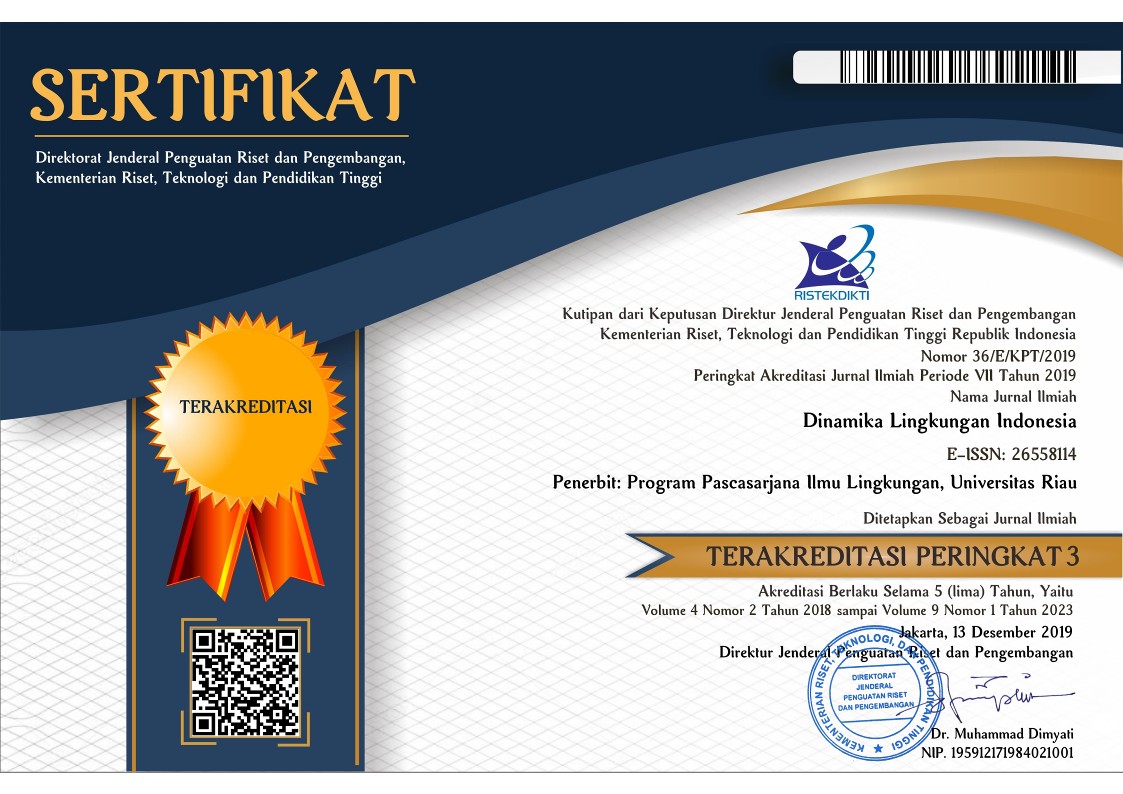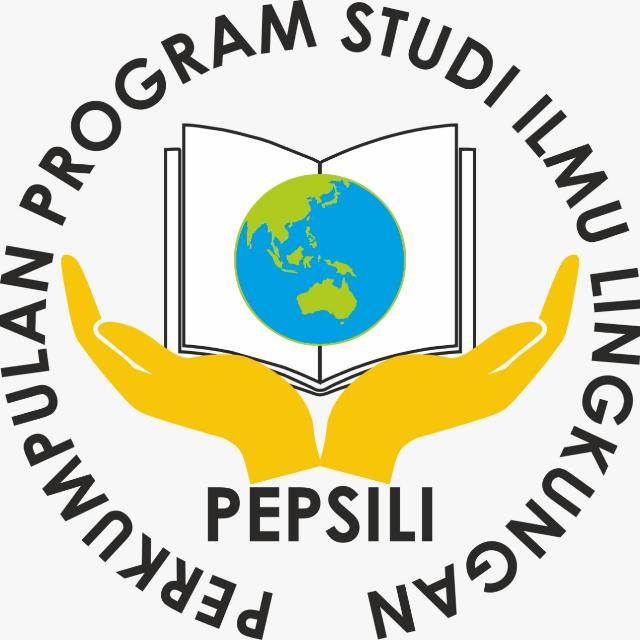Penerapan Metode Activated Sludge dalam Pengolahan Limbah Cair Industri Tahu Beru
Abstract
The tofu industry in its production process uses ± 25 liters of water per 1 kg of soybean raw material. Soybean used as raw material for tofu contains protein, carbohydrates, fat, and other nutritional ingredients so that the resulting liquid waste contains high organic matter that has the potential to pollute the environment with a value of Biological Oxygen Demand (BOD) of 467 mg/L and Chemical Oxygen Demand (COD) of 668.2 mg/L. Efforts to control water pollution can be overcome by processing biotechnology using an activated sludge system. This study aims to analyze the effectiveness of polluted water sediment as the main ingredient of activated sludge in reducing levels of Biological Oxygen Demand (BOD) and Chemical Oxygen Demand (COD) and to determine the growth rate of microorganisms in the acclimatization process. This research was carried out on 4 different composition variations in batches under aerobic conditions using an aerator and a pump as a stirrer. The results showed that the composition of the sludge in treatment IV, namely the composition of the sludge consisting of (60% Waste, 40% Nutrients, and cultured RPH sludge) was the best composition at 60 hours of aeration with the effectiveness of removing BOD concentration of 90.10% and COD concentration. amounted to 87.41% or achieved a reduction value of 46.21 mg/L of BOD concentration and 84.14 mg/L of COD concentration with a specific biomass growth rate of 0.054 day-1.
Keywords
Full Text:
PDFReferences
Adack, J. (2013). Dampak Pencemaran Limbah Pabrik Tahu Terhadap Lingkungan Hidup. Lex Administratum, 1(3).
Afifah, A. S., & Suryawan, I. W. (2020). Kinetika Penyiishan COD dan Pertumbuhan Biomassa pada Aplikasi Lumpur Aktif pada Air Limbah Industri Tahu. Jurnal Ilmu Alam dan Lingkungan, 11 (1), 47-56. https://doi.org/10.20956/jal.v11i1.9573.
Agung, R. T., & Hanry, W. S. (2010). Pengolahan Air Limbah Industri Tahu Dengan Menggunakan Teknologi Plasma. Jurnal Ilmiah Teknik Lingkungan, 2(2). http://eprints.upnjatim.ac.id/id/eprint/1258.
Aini, Sirasih, Made., & Kisworo, Djoko. (2017) Studi Pendahulu Cemaran Air Hewan Di Kota Mataram. Jurnal Ilmu Lingkungan, 15(1), 42-48. https://doi.org/10.14710/jil.15.1.42-48.
Arsawan, M., Wayan, B. I, & Wayan, S. (2007). Pemanfaatan Metode Aerasi Dalam Pengolahan Limbah Berminyak Denpasar. Jurnal Ecotrophic, 2(2). https://ojs.unud.ac.id/index.php/ECOTROPHIC/article/view/2473.
Basir, H., Nani, & Silvy, D. (2014). Pilot Project Inkubator Teknologi Industri Tahu Yang Efisien Dan Ramah Lingkungan. Laporan Penelitian. Balai Besar TPPI. Semarang.
Budhi, Y. B., Setiadi, & T., Harimurti. B. (1999). “Peningkatan Biodegradabilitas Limbah Cair Printing Industri Tekstil Secara Anaerob”. Prosiding Seminar Nasional Teknik Kimia Soehadi Reksowardojo. Institut Teknologi Bandung. Bandung, ISSN 0854-7769. 157-164.
Chojnacka, K. (2010). Bisorbtion and Bioaccumulation The Prospect For Pratical Application. Enviromental International. Vol. 36. 299-307.
Fardiaz, S. (1992). Mikrobiologi Pengolahan Pangan. Dapartemen Pendidikan dan kebudayaan Direktorat Jendral Pendidikan Tinggi Pusat Antar Universitas Pangan dan Gizi Intitut Pertanian Bogor. Bogor.
Handayani, D., Yulianto, M. E., Arifin, & Arief, B. M. (2009). Pengembangan Squenching Batch Bioreactor Untuk Poduksi Plastik Biodegradable (Polihidroksialkanoat) dari Limbah Cair Industri Tapioka. Simposium Nasional RAPI, 8, 58-63.
Hermawan, D. W., & Setianingsih, N. L. (2015). Pengolahan Air Limbah Kadar Garam Tinggi Dengan Menggnakan Sistem Lumpur Aktif. Jurnal Riset, 6(2). https://doi.org/10.21771/jrtppi.2015.v6.no2.p45-50.
Kasa, I. W., Sudaryati, N. L., & Suyasa, I. W. (2012). Pemanfaatan Sedimen Perairan Tercemar Sebagai Bahan Lumpur Aktif Dalam Pengelolaan Limbah Cair Industri Tahu. Ecotrophic : Jurnal Ilmu Lingkungan (Journal of Environmental Science), 3(1), 21-29.
Kesuma, D. D. (2013). Pengaruh Limbah Industri Tahu Terhadap Kualitas Air Sungai Di Kabupaten Klaten, 11-124.
Kundu, P., A, Dabsarkar., & S, Mukherjee. (2013). Treatment of Slaughter House Wastewater in a sequencing Batch Reactor, Performance evaluation and Biodegradation Kinetics. Hindawi Publishing Corporation, 2. BioMed Research International Article ID134872.
Levina, E. (2016). Biogas From Tofu Waste or Combating Fuel Crisis And Environmental Damage In Indonesia. Apec Youth Scientist Journal, 8(1), 16-21.
Marsono, D. (1997). Modul Ajar Teknik Pengolahan Air Limbah Secara Biologis. Modul Penelitian Jurusan Teknik Lingkungan. ITS. Surabaya.
Manender, R. (2010). Pengolahan Limbah Cair Rumah Pemotongan Hewan (RPH) Dengan Metode Fotokalitik TiO2 : Pengaruh Waktu Kontak Terhadap Kualitas BOD5, COD an pH Efluen, M. K. M. Tesis. Program Studi Kesehatan Masyarakat. Pascasarjana Institut Pertanian Bogor. Bogor.
Mulyani, H., Sasongko, S. B., & Soetrisnanto, D. (2012). Pengaruh Preklorinasi terhadap Proses Start Up Pengolahan Limbah Cair Tapioka Sistem Anaerobic Baffled Reactor. Momentum, 8(1), 21-27.
Pelczar, M. J., & Chan, E. S. (2007). Dasar-Dasar Mikrobiologi 1, Alih Bahasa: Hadioetomo RS, Imas T, Tijtrosomo SS, dan Angka SL. UI Press. Jakarta.
Pillay, S., Foxon, K., Rodda, N., Smith, M.T. & Buckley, C.A. (2006). Microbiological Studies of an Anaerobic Baffled Reactor. South African National Research Foundation. University of KwaZulu-Natal.
Priyatno, A. (1996). Manipulasi Aktivitas Selulolitik Mikroba Rumen Kerbau dan Sapi. Skripsi. Fakultas Peternakan. Institut Pertanian Bogor. Bogor.
Ratnani, R. D. (2011). Kecepatan Penyerapan Zat Organik Pada Limbah Cair Industri Tahu Dengan Lumpur Aktif. Momentum, 7(2), 18-24.
Reiny, S. S. (2012). Potensi Lactobacillus acidophilus ATCC 4796 sebagai biopreservatif Pada rebusan Daging Ikan Tongkol. Jurnal IJAS, 2(2), 604-613.
Romli, M., & Suprihatin, D. S. (2004). Penentuan Nilai Parameter Kinetika Lumpur Aktif Untuk Pengolahan Air Lindi Samah (Lachate). Jurnal Teknoloi Industri Pertanian.
Schnurer, A., & Jarvis, A. (2009). Microbiological Handbook For Biogas Plants.
Suryawan, I. W., Siregar, M. J., Prajati, G., & Afifah, A. S. (2019). Integrated Ozone and Anoxic-Aerobic Activated Sludge Reactor for Endek (Balinese Textile) Wastewater Treatment. Journal of Ecological nggineerin, 20(7).
Taherzadeh, M. J., & Karimi, K. (2008). “Pretreatement Of Lignocellulosic Wastes To Improve Ethanol And Biogas Production”: A review”, int. j.Mol.Sci.9,1621-1651.
Tantrip, R. & Thungkao, S. (2011). Isolation Proteolytic,
Lipolytic, and Bioemulsifying Bacteria for Improvement of the Aerobic Treatment of Poultry Processing Wastewater. African Journal of Microbiologi Research, 5(30).
Wang, Y., & Serventi, L. (2009). Sustainability Of Dairy and Soy Processing: A Riview on Wastewater Recycling. Jounal of Cleaner Production.
Yuliana. (2008). Kinetika Pertumbuhan Bakteri AsamLaktat Isolay T5 Yang Berasal Dari Tempoyak. Jurnal Teknologi Dan Hasil Pertanian, 73(2).
Yudhistira, B., Andriani, M., & Utami, R. (2016). Karakterisasi Limbah Cair Industri Tahu Dengan Koagulan Yang Berbeda (Asam Asetat dan Kalsium Sulfat). Caraka Tani. Journal of Sustainable Agriculture, 31(2), 137-145.
Zulaika. E., Arif , L., Tutut, A., & Umi, S. (2012). Bakteri Resisten Logam Berat.
DOI: http://dx.doi.org/10.31258/dli.9.2.p.135-143
Refbacks
- There are currently no refbacks.





